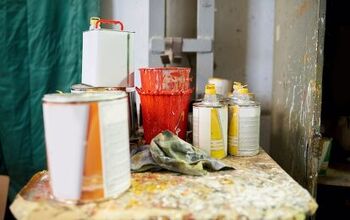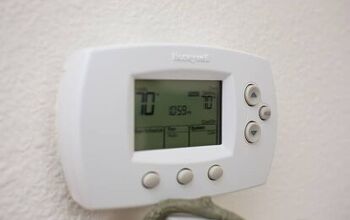How To Dispose Of Battery Acid (Step-by-Step Guide)

Battery acid can refer to any acid that is used in a chemical cell or battery. There are different types of acids within batteries, depending on if it is a lead-acid battery or an alkaline battery. Because car or automotive battery acid is 30-50% sulfuric acid (H2SO4) in water, it is important to dispose of battery acid in the safest way possible.
To dispose of battery acid find a hazardous waste disposal facility nearby or ask your local dump if they accept hazardous materials. You can also neutralize the acid by filling a container halfway with water, pouring the acid in slowly, then adding baking soda. The solution will bubble; once it stops you can flush it down the drain — make sure to wear protective gear.
With batteries used in so many facets of our lives, it’s important to know how to dispose of them properly. For most old batteries that you use in electronics and devices, you can find drop off stations or mail-in companies. They will take care of your used batteries for you.
For battery acid spills, you can clean those yourself with the proper protective gear and supplies.
How A Lead-Acid Battery Works
There are two types of lead-acid batteries. Starting batteries and deep-cycle batteries.
- A starting battery quickly delivers a large burst of power to help an engine start.
- A deep-cycle battery offers a continuous low level of power to help the engine operate.
A lead-acid battery consists of two lead plates separated by a liquid or gel containing sulfuric acid in water. The battery is rechargeable, with charging and discharging chemical reactions. When the battery is being used (discharged), electrons move from the negatively charged lead plate to the positively charged plate.
The negative plate is lead when a battery is fully charged, the electrolyte is concentrated sulfuric acid, and the positive plate is lead dioxide.
When the battery is discharged, the reverse reaction forms lead sulfate on both plates. If the battery is fully discharged, the result is two identical lead sulfate plates, separated by water. At this point, the battery is considered completely dead and can’t recover or charged again.
Dangers of Battery Acid
The sulfuric acid in a lead-acid battery is highly corrosive. The lead is also known to cause health problems within people and can leach into the ground and cause issues, if not properly taken care of.
- Contact with the eyes can cause permanent blindness
- Swallowing severely damages the internal organs and can cause death
- Contact with skin will cause burning
- Breathing in the vapors will cause damage to the lungs.
For all these reasons it is vital to properly, and safely, dispose of battery acid.
Over-charging a lead-acid battery can produce hydrogen sulfide. This is a colorless, very poisonous, and flammable gas. You will notice it by its smell that is similar to rotten eggs.
Since it is heavier than air, the gas accumulates at the bottom of poorly ventilated areas. As you stay longer in a place with hydrogen sulfide, your sense of smell will lessen, and you can become unaware of its presence.
Whenever you are working with battery acid, ventilate the area as best you can. When neutralizing acid, do so outside in fresh air. If you have a battery acid leak in your car, open all the doors before working to allow the vapors to dissipate.
Acid and Base
Lead-Acid Battery acid is, as the name implies, an acid. In order to neutralize it you need to mix it with a base.
Baking soda is a common base that is used for this purpose. Combined with water to dilute the acid, you can safely use baking soda to clean up not only spills but battery acid that is on the terminals of the battery in your car. Alkaline batteries leak a chemical that is a base, so to clean leaks you would use an acid like vinegar to neutralize it.
How Batteries Get Recycled
There are special lead-acid battery recyclers that crush old batteries into nickel-sized pieces and separate the different components. The plastic in lead-acid batteries has a high heat tolerance and you can recycle them. Companies buy the lead from batteries to make new batteries with it.
The U.S. Environmental Protection Agency (EPA) estimates that up to 80% of plastic and lead in a new battery comes from recycled old batteries.
Cleaning Battery Acid Spills
Battery acid leakage is a very dangerous situation. It can burn your skin, contaminate soil, and ruin whatever it has leaked into due to its corrosiveness. If you notice a leak, take care to clean it up as soon as possible.
To clean battery acid you need the proper safety equipment. This includes protective eyewear, nitrile gloves, a face shield, and the correct clothing. You should also make sure to have proper ventilation. Vent the area where the battery acid has leaked to vacate some of the fumes before you start working.
Cover the area with a lot of baking soda. This will neutralize the acid so that it will stop damaging whatever it has leaked onto it. The baking soda will also begin to soak up the battery acid. After about 30 minutes to an hour, it will turn into a paste.
Whenever you notice a leak in your battery, you need to immediately remove that battery and place it in a safe location, so it does not further damage the area it was in.
Place the battery in a leak-proof container. If you must put it on the ground look for a patch of asphalt, as battery acid will eat through concrete.
Recycling Old Lead-Acid Batteries
Lead and the acid inside batteries are dangerous to your health. This is why we need to take extra precautions when recycling old batteries and battery components.
Stores that sell new lead-acid batteries will also take in old ones and recycle them for you. Most states have laws that make this a mandatory service and will not charge you for dropping them off. Any place that sells car supplies will also offer recycling programs. Check with your locally owned retailers to find out about whether or not they take old batteries.
Most towns also have a hazardous waste center that can take your old batteries. Even small towns will have a hazardous waste center that takes collections once or twice a month.
You can also use services such as Earth911 or Call2Recycle to find drop-off points for used batteries.
Related Questions
Can You Throw Away Leaking Batteries?
You can safely dispose of alkaline batteries with normal household waste. You need to recycle rechargeable batteries according to US federal guidelines. This includes automotive batteries.
Does Vinegar Neutralize Battery Acid?
Alkaline batteries leak a chemical that registers as a base on the PH scale. To clean up an alkaline battery leak you can use vinegar or lemon juice to neutralize the alkaline charge.
Will Baking Soda Clean Battery Terminals?
Mix a small amount of water with baking soda to make a paste. Apply this baking soda paste to a toothbrush and clean the terminals and clamps. You can also use steel wool to remove the corrosion.
Related Guides

Sean Jarvis is an interior decorator, writer, and expert handyman. Well versed in everything home improvement, he is a savant at manipulating words and spaces and upgrading everything around him. Sean specializes in writing concise guides about appliance repair and installation, home and lifestyle, and other residential projects.
More by Sean Jarvis













![Finishing Basement Without Permit [Is It Really Illegal?]](https://cdn-fastly.upgradedhome.com/media/2023/07/31/9070078/finishing-basement-without-permit-is-it-really-illegal.jpg?size=350x220)













